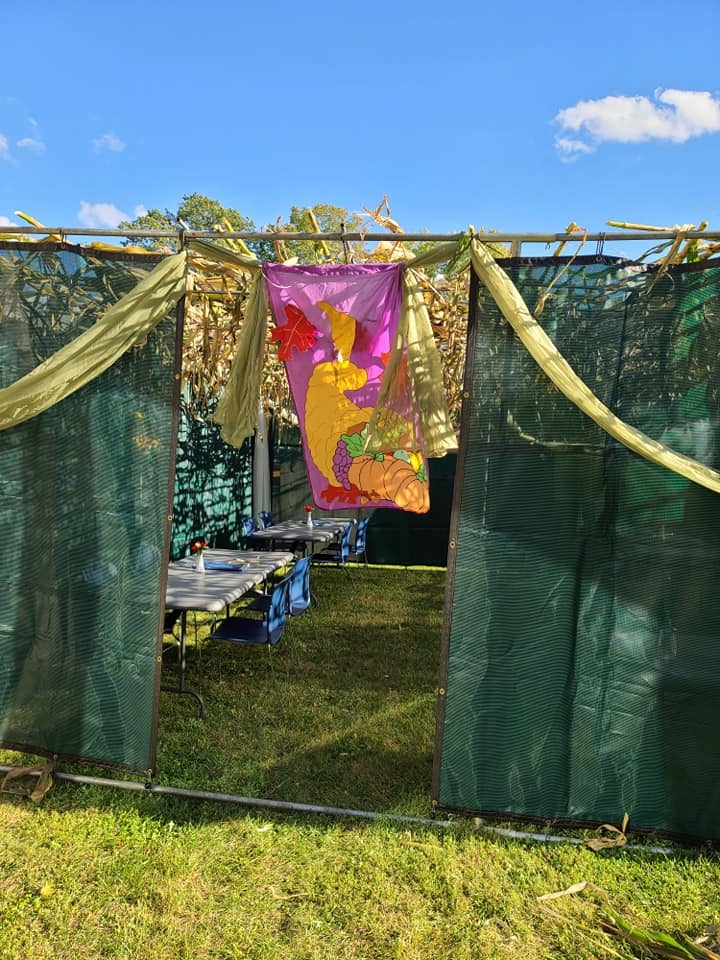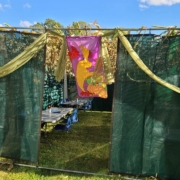Joy to fuel our building – a d’varling for Sukkot

Sukkot: festival of impermanence, festival of joy even in vulnerability. We build sukkot to remember our ancestors’ harvest traditions; to remember the flimsy sukkot in which we dwelled after leaving Egypt; to remember the cloud of glory that protected us in our wilderness wanderings. Sukkot asks us: can we feel protected by God’s presence even now, even in a flimsy little house that lets in the rain and the wind?
That’s always the question at Sukkot. What does it mean to feel safe and protected? What does it mean to build structures — whether physical or spiritual — knowing that nothing we build lasts forever?
On the physical front, this year there may be a paradoxical sense of safety in the sukkah because a sukkah is as well-ventilated as any space can be. It has to be, in order to be kosher. A sukkah can’t be airtight with a solid roof. The roof needs to let moonlight and raindrops through. In these covid-19 times, this flimsy sketch of a room in the fresh air of the great outdoors is the safest place to breathe.
In part through the very fact of what a sukkah is, Sukkot asks us to grapple with impermanence. As soon as we put on the (purposely insufficient) roof, the roof starts to come apart — the cornstalks dry up, the palm fronds or branches wither. “Emptiness upon emptiness,” as we read this morning in Kohelet. Nothing that we can build lasts forever.
And Sukkot asks us to find joy in the midst of impermanence. One of this holiday’s names is Zman Simchateinu, the Time of Our Rejoicing. How can we rejoice in a little temporary house where rain gets through the roof? We might as well ask: how can we rejoice in fragile human bodies that we know will someday die? And my answer is: how can we not?
Early in the pandemic, my friend Cate Denial reminded me that life doesn’t go on “pause” while we’re sheltering-in-place. This is the life we have. Right now it may be more constrained than we want it to be, for pandemic reasons — but it is still life, and we need to live it, not sleepwalk through our days waiting for the pandemic to be over.
I think of that teaching often, and it feels deeply relevant to Sukkot. This little temporary house is a metaphor for human life. It’s fragile. It’s vulnerable. It’s not forever. But as Cate taught me, this is the life we have — and the time to cultivate joy is not in some unimaginable future when everything broken is repaired, but here and now.
Sukkot reminds me to grab joy with both hands, wherever I can find it. In my morning cup of coffee; in the scent of the etrog, sharp and stirring; in the light of the full moon. In the voices and faces of friends, even when the only safe way to see them is on Zoom. In the melodies of our prayers. In the rhythm of weekday and Shabbes.
These are quotidian joys, but they are real, and they can be sustaining. To be sure, the existence of these joys doesn’t negate the difficult realities of this moment. One million dead from covid-19 around the world so far. Credible threats of election violence and voter intimidation. Fears that our democracy might be as fragile as this flimsy sukkah.
So during chag we cultivate joy, and we let that joy fuel us and strengthen us to do the rebuilding work that our world so desperately needs. Maybe this year that rebuilding work means textbanking or phonebanking to help eligible voters register to vote, or volunteering as a poll worker. Those actions help to build our democracy.
Or maybe you feel called toward something more tangible… like chopping onions for the Berkshire Food Project’s grab-and-go meals, because need has tripled since the pandemic began. Helping to cook the meals that feed our hungry neighbors is a mitzvah that comes right out of Torah — and it’s an action that helps to build our community.
Sukkot invites us to cultivate joy that will sustain us in this work and more. Sukkot teaches us to seek joy in the full moon even though we’re also vulnerable to the falling rain. Sukkot teaches us to seek joy even as we recognize the world’s brokenness and work to fix it. Sukkot invites us to remember that this is the life we have, and our job is to live it.
This is Rabbi Rachel’s d’varling for Shabbat Sukkot (cross-posted to Velveteen Rabbi.)






